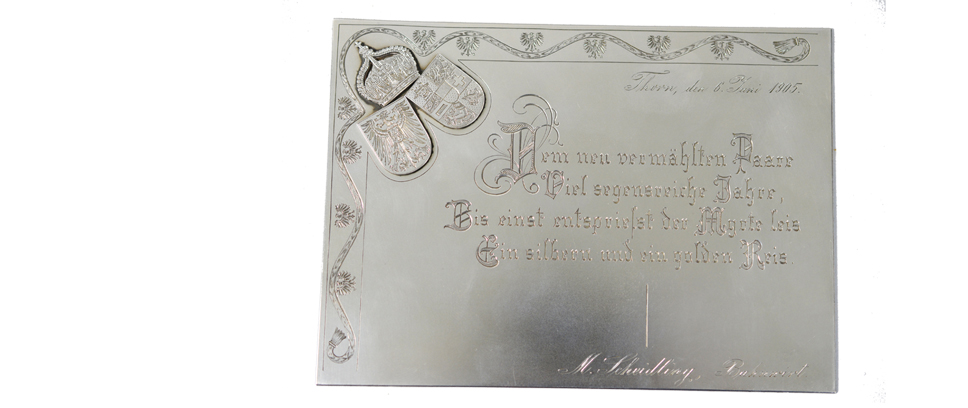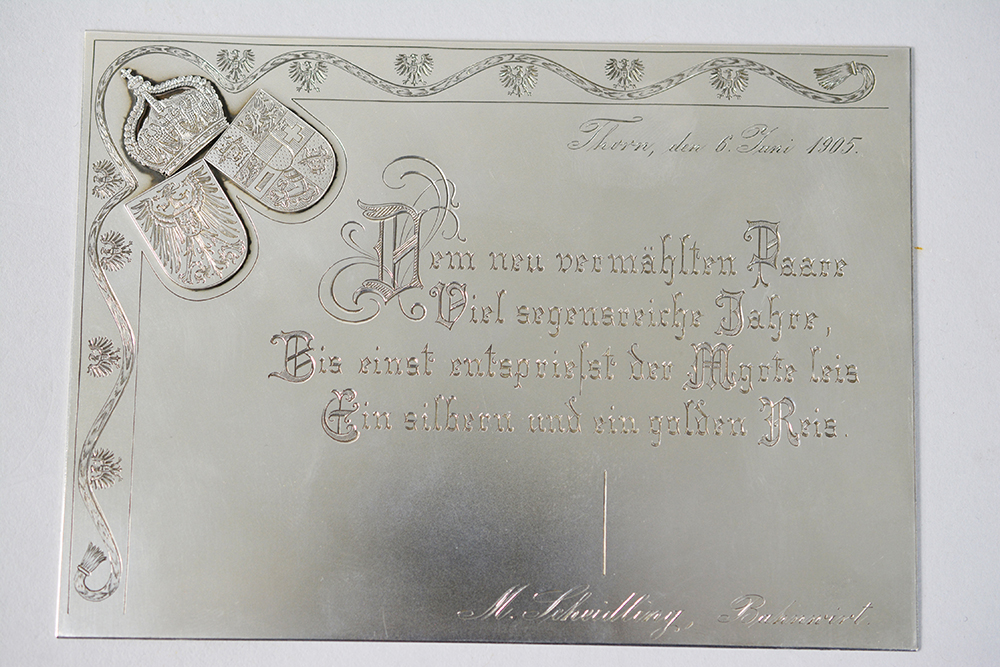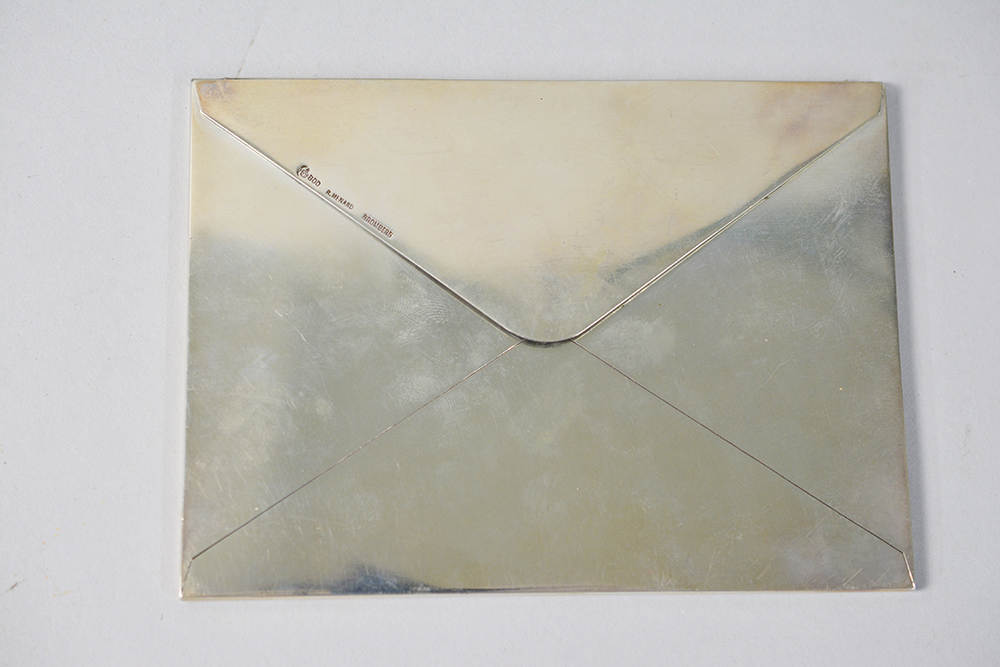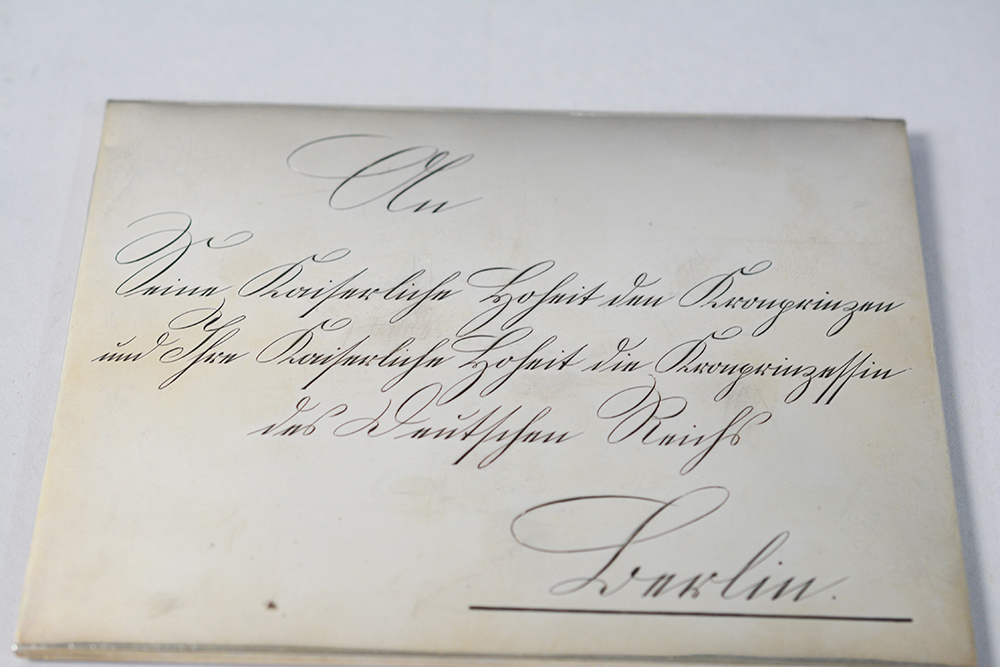
A Costly Letter of Congratulations from the Wilhelminian Period
Wolfgang Cortjaens | 21 December 2021
A silver congratulatory message on the marriage of the crown prince couple is a recent addition to the applied arts collection. Dr Wolfgang Cortjaens, head of the collection of applied arts and graphics, explains its importance.
Unlike arts-and-crafts collections, for example, which were usually designed to reflect overall lines of artistic development, the concept of the DHM collection focuses less on the aesthetic value of an object than on the validity of its historical and cultural-historical testimony. Sometimes both criteria come together in new acquisitions and/or donations in a beneficial way. This is the case with a new arrival in the applied arts collection which was recently offered on the private art market: an engraved card or letter of congratulations made entirely of massive silver along with a sealable silver envelope, addressed in engraved Sütterlin script to the Prussian Crown Prince Wilhelm (1882–1954).

The occasion for sending such a singular and precious gift was the wedding of the crown prince couple, which was celebrated in Berlin in June 1905. The front side of the message is decorated with the crowned coat-of-arms of the newlyweds, under which it reads:
“Thorn, 6 June 1905. / To the newly married couple / Many beneficent years, until one day from the myrtle gently springs / A silver and a golden branch. / M. Scheidling, railway hotelier.”
The letter was commissioned by the businessman Max Scheidling, owner of the railway hotel in the then West Prussian city of Thorn (now Toruń, Poland). He was later a co-founder of MITROPA, the Central European sleeping and dining car corporation.
The exquisite silver congratulatory card speaks indirectly of the affluence, the bourgeois self-awareness, and, not least, of the economic importance of the Eastern provinces for the German Empire. Alongside the Rhine province, which was one of the first to be industrialised, the Prussian province of Silesia was among the most important industrial locations, and the transport connections were thus developed early on. However, there was no central railway administration in the German Empire; the individual railway companies were under the direction of the Ministry of Trade and Commerce. Scheidling no doubt commissioned the costly luxury item to recommend the enterprises that were still in the early phase of development to the highest echelons, but also to present himself as a loyal subject of the crown. He engaged the well-known silversmith Richard Menard from Bromberg (now Bydgoszcz, Poland) to make the piece.
For the applied arts collection, the new acquisition represents a sensible addition to the stock of presents and testimonials from individual persons or institutions to members of the imperial family. The decisive factor in the decision to purchase the object was its outstanding artistic quality and, of course, its highly original design. It is thus a very attractive piece that evokes the curiosity of the visitors and makes it easily accessible to them.
The wish expressed in the epigraph that the crown prince couple may live to experience their golden wedding anniversary (“a golden branch”) was not to be fulfilled. But the object itself remained in the family’s possession until recently; the last owner was a granddaughter of Prince Wilhelm.

